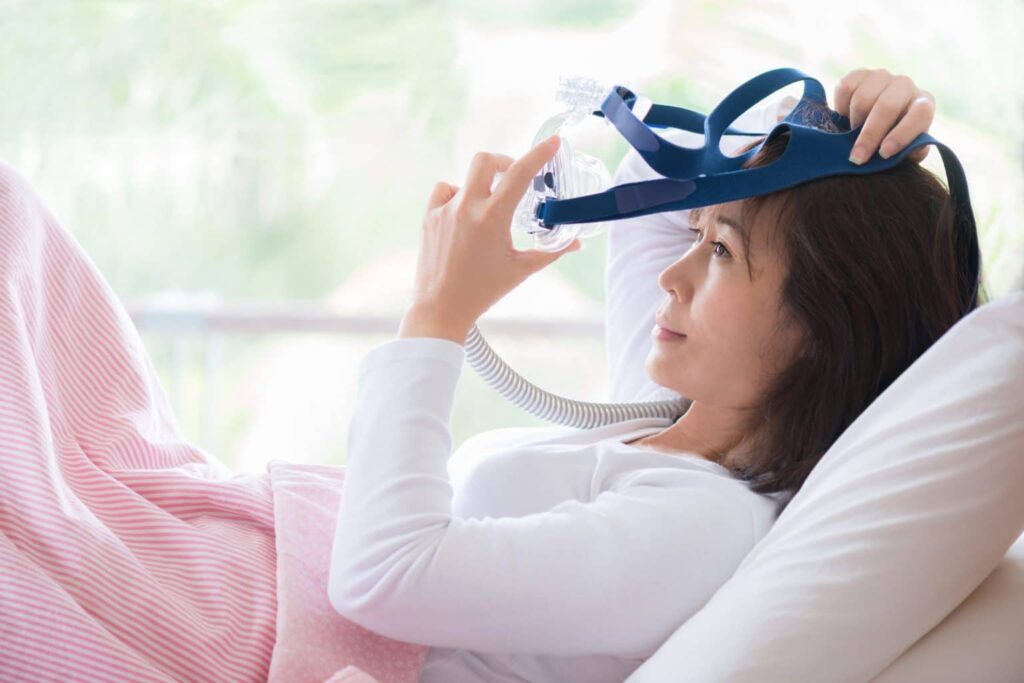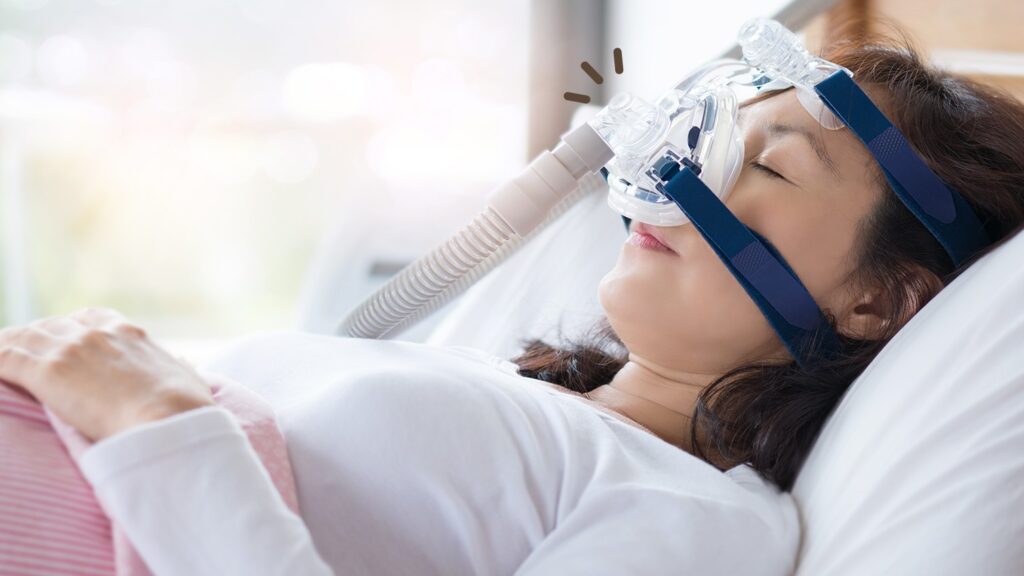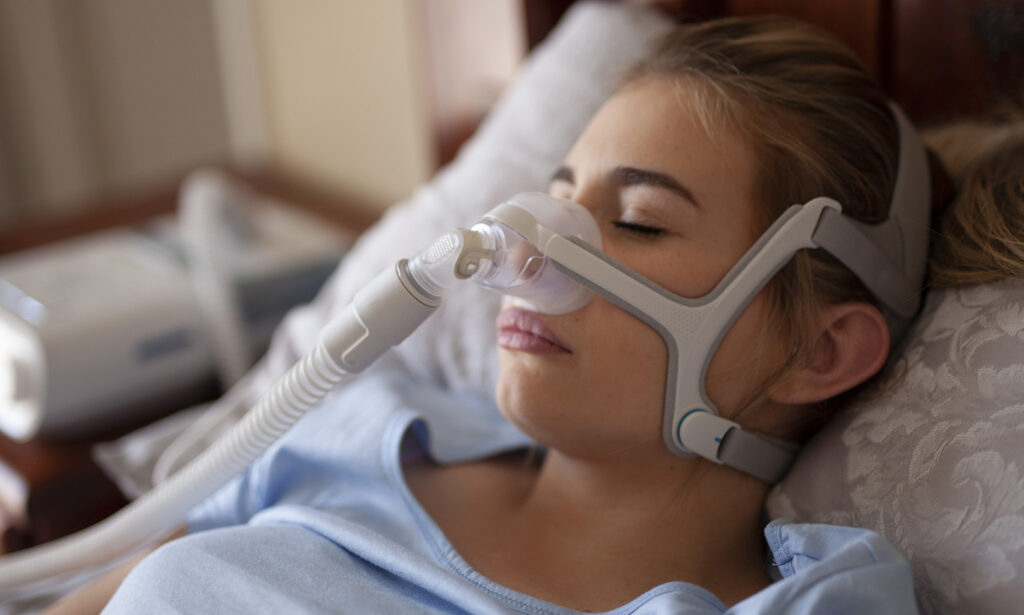Every day, television ads and other forms of advertising bombard us with messages highlighting how choosing the correct mattress may ensure a restful night’s sleep. Even the most technologically advanced mattresses may sometimes fall short of delivering high-quality sleep in the realm of sleep medicine.
Clinical indicators indicating a comfortable night’s sleep may need more than a fantastic mattress may be found in the patient’s body mass index, neck size, and sleep history. Positive airway pressure (PAP) treatment must be started correctly for sleep apnea sufferers with using best suitable cpap mask if they are to have a better night’s sleep. PAP therapy is typically received with patient concern, despite being a treatment for a patient’s illness. What is the difficulty for sleep technicians? assisting patients in getting over their nervousness and getting used to a treatment where disobedience is the adversary.
Here are a few simple suggestions you may utilize to guarantee the optimal mask fit, regardless of whether the proper interface is selected for immediate use in the sleep lab or for ongoing usage at home.
1. COMMUNICATE WITH THE PATIENT
It’s common for patients to complain, “There’s no way I’m going to sleep with that thing on my face,” according to experienced sleep technologists. It seems sense that the thought of sleeping while wearing CPAP masks and helmet could first be unsettling. The patient’s first-time experience will be improved by the sleep technologist’s sympathetic approach, which will also address any worries or misunderstandings the patient may have before starting PAP treatment.
A nervous patient may learn about CPAP mechanics from a sleep tech while being reminded of the treatment’s objectives. A continuous, more pleasant night’s sleep will be possible thanks to the compressed air acting as a “splint” to keep the airway from collapsing, as the technologist may explain. The sleep tech should consistently provide positive reinforcement if the patient seems resistive to PAP treatment.
2. A DEMONSTRATION OF THE INTERFACE
Nasal CPAP masks, full face CPAP masks, and nasal pillows/prongs are the three basic interface kinds. Patient comprehension of each kind of mask may be improved by explaining the titration procedure and including an interface demonstration. A variety of mask styles may be shown on a mannequin by the sleep technologist, who can also provide instructional films to aid in “visualizing” the right mask fit. The patient should be given the opportunity to test at least two nasal CPAP masks, one full face mask, and one nasal pillow before the sleep technologist chooses CPAP masks.
For the benefit of the interpreting physician and the DME provider, it is useful to record the presentation of several alternatives.

3. HEADGEAR CHOICE AND MASK SELECTION
The patient and the sleep technologist choose the best interface together. The choice of an appropriate mask may be influenced by the patient’s preferences, degree of comfort, and tolerance. The sleep technician should start thinking about the right mask as soon as the patient gets to the sleep lab based on visual observations. The patient’s head and face form, as well as the amount of facial hair, may be quickly assessed to help choose the right mask.
The patient can have trouble sleeping with their lips closed if a nasal interface is used. To keep the jaw locked, a chin strap may be used on those who have frequent mouth leaks. Use of a full face mask or a hybrid may be necessary if the air leak continues. The use of a full face mask is often saved as an additional option to be thought about later, unless the patient specifically wants it.

The way of life of the patient may also affect the choice of interface. The demands of the patient are met by several interface types. Patients may read or use their glasses before bed using nasal pillows or prongs. Full face CPAP masks and nasal pillows/prongs provide a clear view with less direct touch to the face. For those who are afraid of enclosed spaces, this can be an alternative. Patients who like to be able to access their mouths without taking off their full mask and headgear may choose for nasal CPAP masks.
The right headgear has to be correctly matched to the particular kind of mask. A kind of headgear makes contact with the lateral and posterior sides of the head before fastening to the interface. It is crucial to remember that the mask should feel snug but not tight when being fastened. Apply the same amount of left and right tension to each strap. A balanced tension will reduce air leak and the potential for mask noise.
The comfort of the headgear in terms of weight, material type, and color may also affect the choice of mask. It is possible to alter headgear to accommodate bigger heads and various hairstyles. One kind of nasal mask permits somewhat slack headgear, allowing the interface to wiggle slightly with each patient’s inhalation and exhalation.
The choosing of CPAP masks for children is more difficult. When there are craniofacial problems present, there aren’t many mask options that suit the tiny face appropriately. According to Gary Montgomery, MD, director of the Sleep Center at Children’s Healthcare of Atlanta, “it is crucial for the technologist to work closely with the pediatric sleep expert who is prescribing the CPAP to come up with an appropriate mask and headgear for the specific kid. Adenotonsillectomy is often regarded as the first line of therapy for obstructive sleep apnea in children.
4. ADEQUATE MEASUREMENT
The majority of interface manufacturers include thorough guidelines for getting the right mask fit. Size gauges may be printed from the Internet or provided in the interface package. The use of several different size gauges may help the sleep technologist acquire precision. If your size gauges are kept on a key chain, separate the gauges that you use the most regularly. According to Susan Keller Yenney from Philips Respironics, this will help the technologist comprehend the CPAP masks that are accessible in their sleep lab. In addition, Yenney cautions that “even though it looks to be about the same, a size small in one specific mask may not correlate to a size small in a different design mask.” A planned process for mask fitting will guarantee mask type performance and reduce air leak.
Other resources
1. What are the risks of undergoing Lasik surgery?
2. What are ways to treat eye problems in children to avoid LASIK?
3. Why do people try to avoid Lasik eye surgery?

